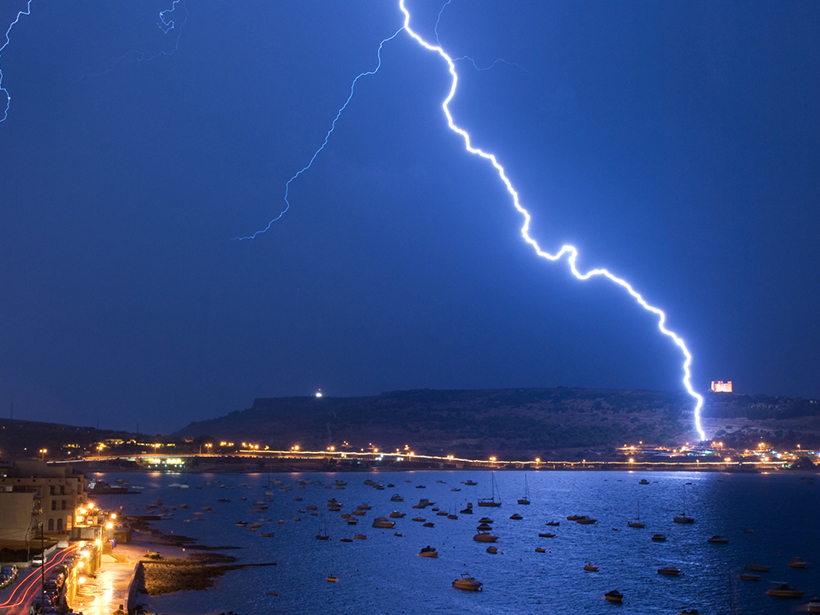Source: Geophysical Research Letters
When a meteorite strikes a rock, it triggers rapid changes in pressure and temperature that alter the rock’s structure. Traditionally, scientists have treated microscopic planar deformation features in quartz crystals as a telltale sign of past meteorite impacts. However, recent research has demonstrated that lightning strikes can also leave similar signatures of shock.
In a new paper, Chen et al. mathematically simulate a lightning strike on a granite surface. They demonstrate that the resulting changes in the rock are a fingerprint of the energy and intensity levels of the lightning that caused them. More specifically, they demonstrate that shock features in quartz are created by the intense shock wave associated with the lightning strike. The results suggest that shocked quartz should not be interpreted as certain evidence of past meteorite impacts.
Scientists have known for decades that lightning can rapidly heat rock to over 2,000 kelvins near the strike point. Organic material on the surface burns off, and part of the rock itself melts almost instantaneously, later cooling to form a glassy surface layer called a fulgurite. It wasn’t until 2015 that researchers discovered shocked quartz in the granite substrate of a fulgurite.
In the new study, the research team developed a mathematical model to estimate the pressure exerted by a lightning strike on a granite surface, as well as the rapid heating and cooling of the rock. The model incorporated physical characteristics of lightning and granite, such as the typical temperature of lightning, the melting temperature of granite, and the temperature at which organic material on the granite surface would likely burn.
The simulations showed that a lightning strike can impart more than 7 gigapascals of pressure on the granite surface, enough to trigger the formation of shocked quartz. The strike creates a roughly circular layer of fulgurite about 18 centimeters across within a slightly wider region of burned organic material about 22 centimeters across.
These results are consistent with observations of fulgurite samples collected from field sites. For example, fulgurites collected from Mount Mottarone in Italy have regions of burned organic matter that are of similar size, roughly 20 centimeters across. Fulgurites from Les Pradals in France feature shocked quartz in a surficial layer less than 3 micrometers thick, consistent with the pressure calculations in the lightning strike model.
With this discovery, additional evidence will likely now be needed to convince impact geologists that shocked quartz indicates a past meteorite impact. Furthermore, these findings could help explain confusing occurrences of higher than expected impact rates, according to evidence for shocked quartz, in some regions. (Geophysical Research Letters, https://doi.org/10.1002/2017GL073843, 2017)
—Sarah Stanley, Freelance Writer
Citation:
Stanley, S. (2017), Lightning strikes may Leave traces like those of meteorites, Eos, 98, https://doi.org/10.1029/2017EO082493. Published on 20 September 2017.
Text © 2017. The authors. CC BY-NC-ND 3.0
Except where otherwise noted, images are subject to copyright. Any reuse without express permission from the copyright owner is prohibited.

